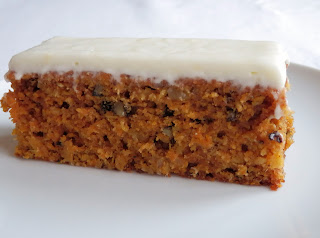We have pasta most days. I know that may horrify the carb-avoiders among you but frankly, nothing can match it for taste, speed and ease of preparation and I get withdrawal symptoms if I go for more than a few days without. The best pasta dishes are almost always the simplest - think of pesto, made with basil, pine nuts and parmesan or a fresh tomato sauce, sauteed quickly with maybe a finely chopped shallot or two and served with nothing more than a few basil leaves and a drizzle of olive oil.
One of my favourite combinations for pasta is fish with fresh herbs and vegetables and this swordfish recipe is one of the finest. It originates in Sicily where the use of mint in savoury dishes is quite widespread and it's a custom that I love. This dish is arguably best made in late summer when aubergines and tomatoes are at their peak but I tend to think of it as something I can (and indeed do) make all year round. It's a beautifully balanced dish of flavour and colour. Just please make sure that you use fresh mint - don't even contemplate using the dried stuff here.
I'm sending this to one of my favourite challenges, Herbs on Saturday, created and hosted by Karen from the consistently wonderful Lavender and Lovage although I apologise for not having foraged for the mint!

I'm also sending this over to Javelin Warrior's weekly challenge, Made with Love Mondays which encourages us all to cook from scratch.
RECIPE
350g penne or other short pasta
1 large aubergine
olive oil
300g swordfish
1 garlic clove
160g cherry tomatoes, rouhgly chopped
a bunch of mint, chopped
salt and freshly ground pepper
Start by dicing the aubergines into 1cm cubes. Some people salt them before cooking to draw out excess moisture and bitterness but I don't bother - I've tried doing it and really I don't think that it makes a difference.
Pour some olive oil into a large frying pan, about 1-2 cm, and when it's hot, fry the aubergine cubes until golden brown. Remove using a slotted spoon and place on a paper towel to absorb the excess oil. You may need to do this in two batches. Season with salt and add half of the chopped mint.
Discard the oil and give the pan a quick wipe. Remove any skin from the swordfish with a sharp knife and cut into cubes, roughly the same size as the aubergine. Lightly squash the garlic clove, making sure it stays intact and heat with a tablespoon of olive oil in the frying pan. When it just starts to colour, discard the garlic and add the swordfish. Fry quickly for 2 minutes, then add the cherry tomatoes and cook together for a further 2-3 minutes. Season with salt and pepper.
In the meantime, cook the pasta in salted water according to instructions.
When the pasta is al dente, drain quickly and mix all together with the swordfish, tomatoes, aubergine cubes and the rest of the mint.













